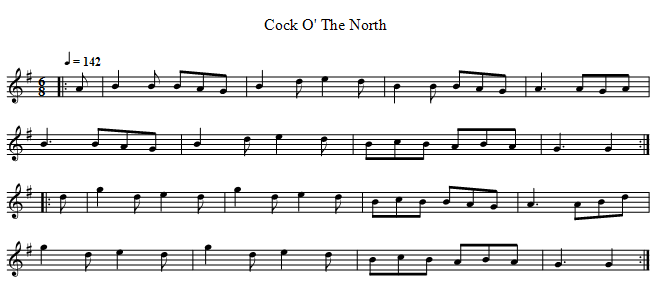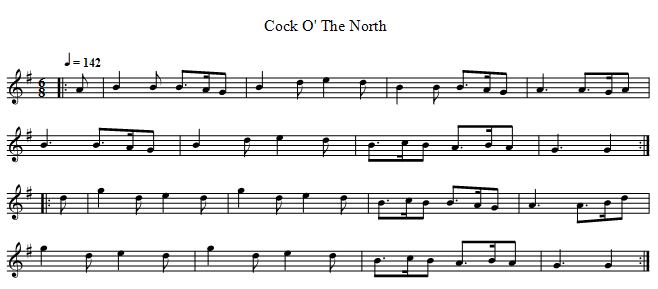Play Dance Tunes: Difference between revisions
No edit summary |
No edit summary |
||
| Line 10: | Line 10: | ||
{{TunePlayer|Tune={{#var:Tune1}}}} | {{TunePlayer|Tune={{#var:Tune1}}}} | ||
<br><br> | <br><br> | ||
Notice how lifeless and 'flat' the tune feels | Notice how lifeless and 'flat' the tune feels rendered in strict time when compared to this second version where the long-short pairs are written out in full. The tune is in 6/8 (Jig) time so long-short quaver pairs fall on the 1st and 4th beats in the bar. Quavers at the 3rd and 6th beats are given their full value. | ||
{{TuneDisplay|Tune={{#var:Tune2}}}} | {{TuneDisplay|Tune={{#var:Tune2}}}} | ||
{{TunePlayer|Tune={{#var:Tune2}}}} | {{TunePlayer|Tune={{#var:Tune2}}}} | ||
Revision as of 01:34, 12 October 2018
Tunes used for Morris Dance, in common with very many traditional tunes, are not generally written down in sheet music as they are actually played. This can cause problems for some classically trained musicians who are used to playing the notes exactly as written in the score. Rather, the written score should be taken as an aide-memoire and not as a definitive statement of how the tune should be rendered by the musician.
The most common short hand technique in the written score is in the representation of pairs of quavers. These should almost never be played with equal duration of each quaver in the pair but rather by extended the duration of the first quaver at the expense of the second. This long-short pairing can be written as a dotted quaver followed a semiquaver.
Obviously, this would be tiresome to write out in full every time, especially when the writer was intending merely to produce something to remind themselves of how the tune actually goes.
I have attempted to illustrate this long-short quaver pair by taking a well known example (Cock O' the North - aka Auntie Mary).
NB The Media Player does not work on some iPhones
Click Here if you can't see the Media Player.
Notice how lifeless and 'flat' the tune feels rendered in strict time when compared to this second version where the long-short pairs are written out in full. The tune is in 6/8 (Jig) time so long-short quaver pairs fall on the 1st and 4th beats in the bar. Quavers at the 3rd and 6th beats are given their full value.
NB The Media Player does not work on some iPhones
Click Here if you can't see the Media Player.
It is the musicians responsibility to give the tune the lift and lightness of feel that will encourage the dancers to perform the dance sometimes for as much as a whole day at length.

